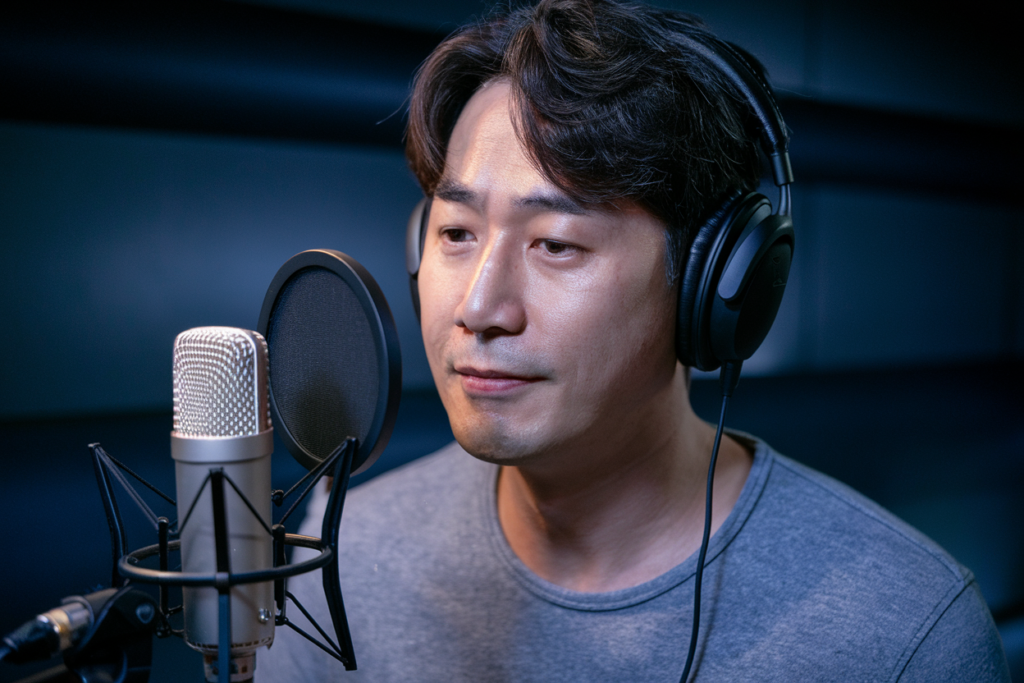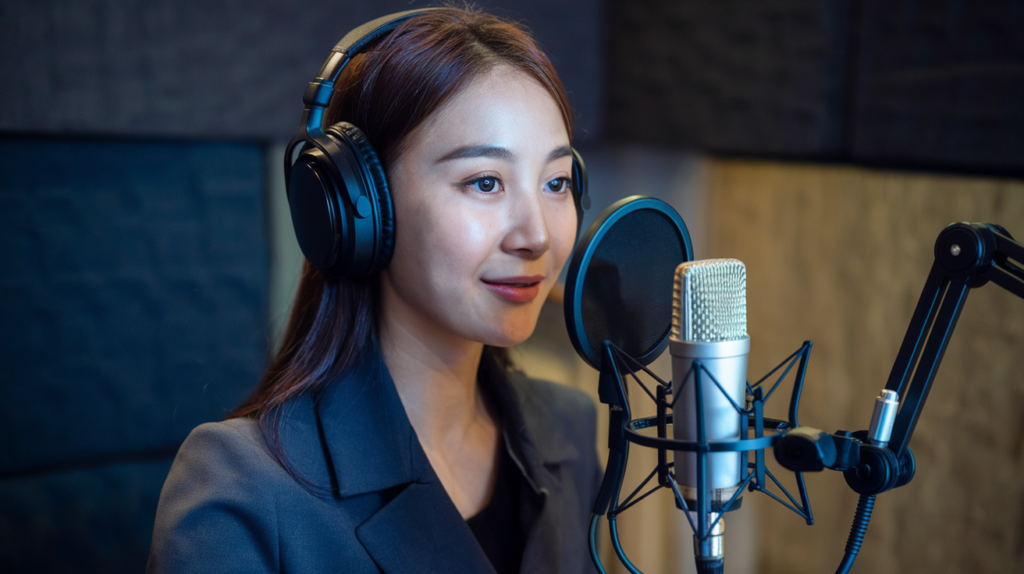Key Takeaways
- The official Korean accent, known as “standard Korean,” is rooted in the Seoul dialect and serves as the benchmark for effective communication across South Korea.
- Mastering standard Korean pronunciation and intonation enhances clarity, allowing better interactions with native speakers.
- Understanding cultural nuances tied to the official accent enriches conversations and engagement with Korean media.
- Familiarity with regional accents helps improve comprehension and adaptability, especially in voiceover or media-related fields.
- Embracing the official accent significantly boosts language learning experiences by building confidence in speaking skills.
Ever wondered what the official Korean accent sounds like? Understanding this can be a game-changer if you’re diving into the rich world of the Korean language. The official accent, often referred to as “standard Korean,” is rooted in Seoul’s dialect and serves as the foundation for formal communication across South Korea.
Understanding The Official Korean Accent
The official Korean accent, known as “standard Korean,” derives from the dialect spoken in Seoul. This accent serves as a linguistic benchmark for effective communication across South Korea and among Korean speakers globally. Familiarity with this accent enhances your ability to connect with native speakers, making interactions smoother and more meaningful.
Standard Korean features specific pronunciation patterns, intonation, and rhythms that distinguish it from regional dialects. For instance, vowel sounds may vary significantly between different areas of the country. When you practice using the standard accent, you adopt these phonetic qualities that resonate well with listeners.
Learning this accent also opens doors to a deeper understanding of cultural nuances embedded within the language. You’ll find that certain expressions or phrases carry different connotations depending on how they’re pronounced. This awareness enriches your conversations and helps you engage more fully with Korean media—whether it’s television shows, films, or music—where voice actors often utilize standard accents for broader appeal.
Embracing the official accent can improve your skills if you’re considering work in voiceover projects or other media-related fields involving Korean content. Delivering content in standard Korean ensures clarity and professionalism in voiceovers while appealing to a wider audience.
By honing your pronunciation and mastering this official accent, you position yourself effectively within any context requiring proficient use of the language. Whether you’re pursuing opportunities as a voice artist or simply want to communicate better with friends or colleagues, understanding the official Korean accent plays an essential role in your journey.
Characteristics Of The Official Korean Accent
The official Korean accent, or standard Korean, features distinct qualities that set it apart from regional dialects. Understanding these characteristics enhances your communication skills and cultural appreciation.
Pronunciation Traits
Pronunciation in standard Korean focuses on clarity. Certain sounds, such as the difference between “ㄱ” (g/k) and “ㅋ” (k), are pronounced distinctly. Vowel sounds like “ㅏ” (a) are articulated clearly without reduction, ensuring each syllable stands out. Consonants at the end of syllables, particularly final stops like “ㅂ” (b/p) or “ㄷ” (d/t), maintain a crispness that’s essential for clear speech. It’s crucial to practice these traits, as they significantly influence how well others understand you.
Intonation Patterns
Intonation plays a vital role in conveying meaning in standard Korean. A rising intonation often indicates questions, while falling intonation typically signals statements or commands. Emphasizing certain words can change the overall message too; stressing important nouns can enhance engagement during conversations. Mastering these patterns not only improves your speaking ability but also helps you connect with native speakers more effectively.
By honing these pronunciation traits and intonation patterns, you position yourself as a confident communicator in both casual conversations and professional settings—ideal for those pursuing careers in voiceover work where clarity is paramount.
Regional Variations In Korean Accents
Korean accents vary significantly across different regions, each with unique characteristics. Understanding these variations enhances your grasp of the language and improves communication skills.
Comparison With The Standard Accent
Regional accents often diverge from the standard Korean accent, which is based on Seoul’s dialect. For instance, speakers from Busan may pronounce certain vowels differently and use distinct intonation patterns. These differences can affect how words are understood, making it essential for you to recognize them if you’re engaging in voiceover work or any form of spoken communication in Korean. By familiarizing yourself with these variations, you enhance clarity and connection when working with diverse audiences.
Impact Of Dialects
Dialects play a crucial role in shaping regional accents in Korea. Each province has its own dialect that reflects local history and culture. For example, Jeolla Province speakers might employ softer tones and rhythm compared to those from Gyeongsang Province, who tend to have a sharper intonation. If you’re involved in voice acting or similar fields, understanding these dialects helps you adapt your delivery style for authenticity. Recognizing the subtle nuances not only enriches your performances but also fosters better engagement with native speakers across various contexts.
Familiarity with regional accents empowers you as a voice artist, enhancing both your versatility and connection within the Korean-speaking community.
Importance Of The Official Korean Accent
Understanding the official Korean accent is crucial for effective communication in various contexts. This accent, known as standard Korean, enhances clarity and fosters connection among speakers.
In Language Learning
Mastering standard Korean significantly boosts your language learning experience. By focusing on pronunciation traits and intonation patterns, you develop a solid foundation for speaking clearly. Whether you’re practicing specific sounds like “ㄱ” (g/k) or articulating vowel sounds, these details matter. Clarity not only helps you convey your thoughts but also builds confidence when interacting with native speakers. Additionally, recognizing how rising intonation indicates questions can prevent misunderstandings during conversations. As you refine these skills, you’ll notice an improvement in both casual chats and formal exchanges.
In Media and Communication
In media and communication, the official Korean accent plays a pivotal role. Whether you’re working as a voice artist or engaging in any form of public speaking, mastering this accent ensures that your message resonates with audiences effectively. Consistent articulation of words enables listeners to understand content without confusion. For instance, voice actors who adopt the standard accent often connect better with their audience because it feels familiar and approachable. Using correct intonation adds emotional depth to your delivery—falling tones can emphasize statements while rising tones can express curiosity or excitement. Ultimately, honing this accent elevates your overall performance in any media-related endeavor.
Conclusion
Grasping the official Korean accent is a game-changer for anyone looking to connect with Korean speakers. It lays the groundwork for clear communication and deepens your understanding of cultural nuances.
By focusing on standard Korean’s pronunciation and intonation, you’ll not only boost your language skills but also gain confidence in various settings. Whether you’re pursuing voiceover work or simply aiming to engage more authentically, mastering this accent opens doors to richer interactions.
Embracing both the official accent and regional variations enhances your overall experience with the language. You’ll find that these insights lead to more meaningful connections within the vibrant tapestry of Korean culture.
Frequently Asked Questions
What is Standard Korean?
Standard Korean, also known as the official Korean accent, is based on the dialect of Seoul. It serves as a linguistic benchmark for communication across South Korea and among global Korean speakers.
Why is mastering Standard Korean important?
Mastering Standard Korean enhances effective communication, particularly in casual and professional settings. It improves clarity and engagement when interacting with native speakers, making conversations more meaningful.
How does pronunciation differ in Standard Korean?
In Standard Korean, specific sounds like “ㄱ” (g/k) and “ㅋ” (k) are pronounced distinctly. Clear articulation of vowel sounds is also essential for effective communication.
What role does intonation play in Standard Korean?
Intonation is crucial in conveying meaning; rising intonation typically indicates questions while falling intonation signals statements. Mastery of these patterns aids comprehension during conversations.
How do regional accents affect understanding of Standard Korean?
Regional accents can significantly diverge from Standard Korean, affecting comprehension. For example, Busan speakers may pronounce vowels differently than those from Seoul, which can lead to misunderstandings.
Why should voiceover artists learn about regional variations?
Understanding regional variations enriches voiceover performances by allowing artists to connect better with diverse audiences. Familiarity with local dialects enhances engagement and relatability in their work.
How can learning Standard Korean boost confidence in speaking?
Focusing on pronunciation traits and intonation patterns builds a solid foundation for clear speaking. This practice increases confidence when interacting with native speakers across different contexts.







